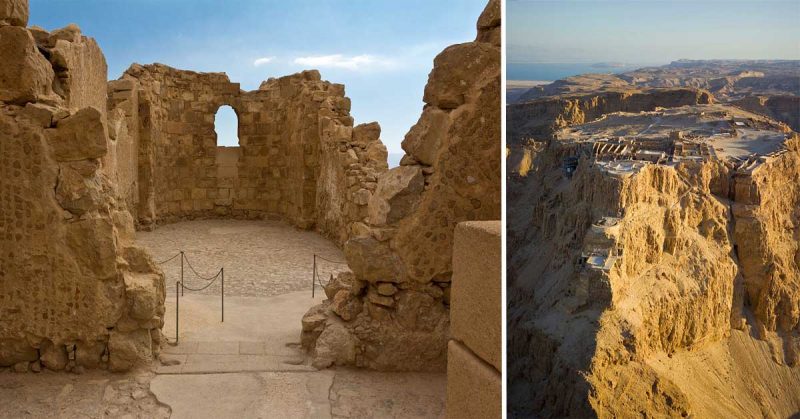War History Online presents this Guest Article from Joseph M. Durante
For most of the Ancient World, the Roman Republic and Empire dominated the known world. The Romans were known for many things, which including many famous tacticians, politicians, their architecture, engineering, and most famously their military. The Romans conquered the known world from modern-day Spain, to Britain, into Germany and then down through the Middle East into Northern Africa. They controlled the Mediterranean Sea by military force and helped shape modern strategies and tactics during the war. This paper reviews the scholarship on the Roman military approach, revealing what historians contend made it so effective and how it operated so effectively.
In the early republic, the Romans faced many defeats, especially to other Italian states. With the help of an organized military, they were able to control mainland Italy. The Roman military consisted of farmers and landowners who were conscripted in time of war to serve and fight. For many years this practice was maintained to keep an authentic Italian army to fight and defend their homeland. The Romans didn’t wear armor but instead wore tunics and cloth during wartime, which was very lightweight but not very protective.
Many people attribute the rise of the Roman conquest due to their expert weapons of war. Most of the weaponry of the Romans were copied from the Greek City States and by this, I mean that the Romans also used a phalanx formation, which included long spears and having an entire squad of men march together with the spears facing outward. The phalanx was the best defense against cavalry and infantry charges but very weak against the light and mobile units that could outflank their position. The cavalry were able, with speed, to flank the phalanx and then force the soldiers into becoming defenseless due to their heavy weaponry that only worked if facing the enemy charge.
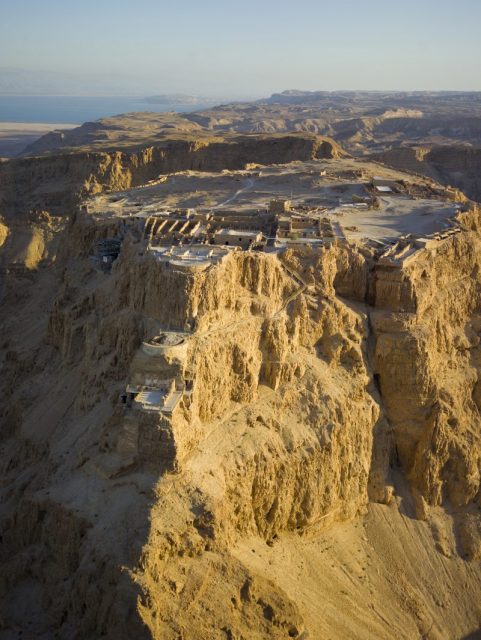
From using the phalanx formation, which clearly didn’t work for the Romans, they switched to a mass of soldiers using only spears, swords, and a round wooden shield. The early Romans that succeeded the phalanx warriors used a simple round wooden shield, most likely laminated with animal fur to make it stronger, and a very simple short sword. For the Romans, this was an improvement, but during war, they still had a difficult time winning the key battles they needed. Their set of great victories didn’t occur until a man named Hannibal Barca of Carthage came to mainland Europe. Because Hannibal kept encroaching on the borders of the city of Rome, the senators and all officials wanted to leave and abandon Rome. One man stepped up, Publius Cornelius Scipio Africanus stood against the greatest odds and this truly began the Second Punic War, this is where he had found the famous blade, the gladius from Spanish blacksmiths, “the Spanish sword was probably responsible for many victories during this period, since the side who favored it often seemed to succeed in battle.”
A great deal of attention among Roman military historians has been devoted to the different weapons, tactics, commanders, and the engineering that makes up their armies. They justify their interest, saying “Her vast empire was literally and figuratively, carved out primarily by the sword.” The gladius, or short sword, is the most recognizable instrument of the Roman military. The sword and shield combination made it highly effective in close combat, because “the point would have been ideal for splitting light mail armor or pushing between an opponent’s ribs.” This sword helped the Romans conquer Northern Italy, Spain, Sicily, and Northern Africa, and as such, it brought the start of the Roman domination of the Mediterranean. The gladius also played a large part in establishing the Roman military mystique in civilian’s eyes. This sword “arguably working as much by the fear it engendered in witnesses,”was a symbol of strength and forcible power. “The sheathed, but deliberately visible, sword worn by the Roman soldiers and other fighting men constituted a deadly threat, and a constant source of terror.” This sword, the gladius, received its name from the gladiola flower for its shape looking like that flower. Most people refer to this sword as the sword gladiators used in fights, but actually, the gladius came many years before the actual gladiators.
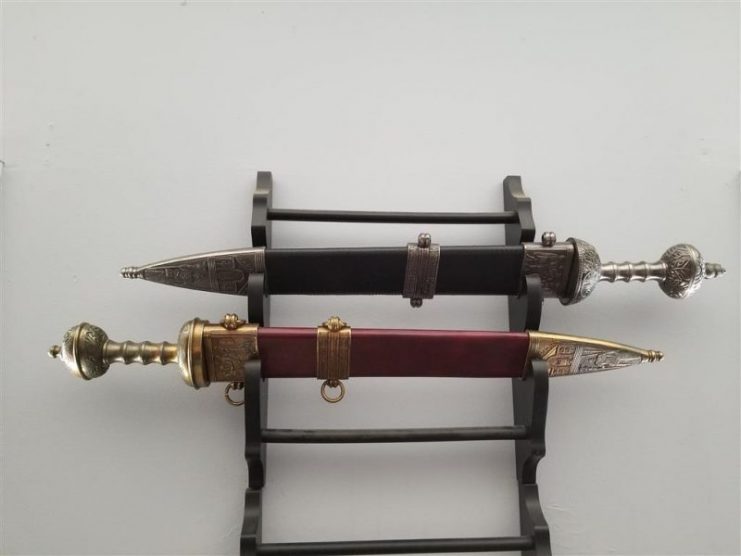
The next set of instruments that belonged to a Roman soldier was a called a pile or pilum. This was a javelin only used for throwing at your enemy. Most of the pila was made of wood and at the end of the javelin where the sharp pyramid style point was a foot long of metal. The shaft of the pila when it was thrown would strike the shield or any armor of the enemy, but that is only if it didn’t hit any parts of the body. When the javelin wound makes contact the shaft would bend and made the weapon useless. Most people would think that this weapon is ineffective but in reality having a bent weapon meant it couldn’t be used again, so the enemies wouldn’t be able to throw it back. Also having a six-foot-long javelin in your shield made the shield extremely heavy and most likely thrown away. The Romans would start every engagement by launching either one or two pilums at the enemy’s units. They would reduce the numbers more effectively and not tire out the Roman legions. Ideas and inventions leading to the pilum was only the small start to creating weapons of war that would enable the conquering of cities with much ease.
In part of the armies of Rome, there were not only just mere infantry, but cavalry, auxiliary troops, slaves, chefs, blacksmiths, and engineers. Even though the infantry made up of the main bulk of a legion, it was as equal to the other parts of the legion as well. Having cavalry was to show both military and citizen rank, but it was to have them outmaneuver the enemy for being much faster than infantrymen. Slaves, chefs, and blacksmiths made up a small portion of a legion or army but also were important; they were the ones who completed the smallest task, cooked the food and repaired weaponry. Probably of all, the engineers could only match in quality and purpose as the infantryman and cavalry would have.
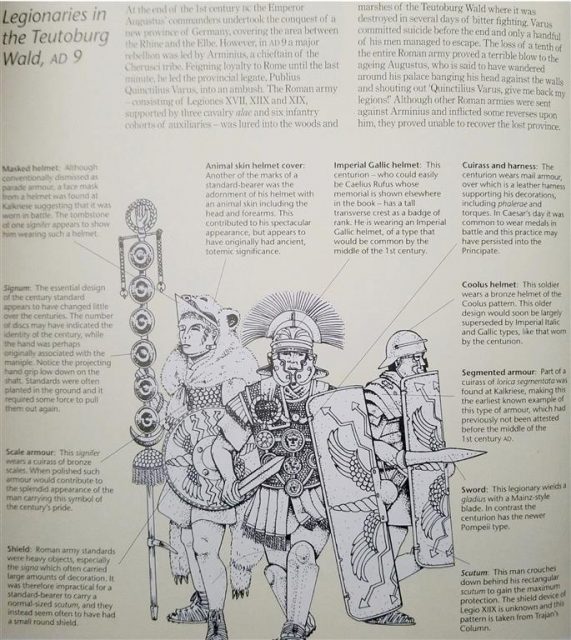
The Roman Army did not only become successful by their hand weapons but their advancements of engineering edit. The Roman siege works helped them to dominate the known world with much ease due to their excessive work with advancing the strength each siege weapon edit. In times of war, the Romans would have used siege weapons such as the battering ram, the siege tower, and ladders. All of these were used in assaulting fortified cities or towns. The battering ram was used to destroy the gates or sections of a wall so troops could enter the area. The siege tower is probably the most famous siege work in war. This tower varied in size due to the size of the size of the enemies’ walls and was designed to have soldiers be moved from the outside of an encampment to the inside to begin to conquer edit. Ladders had the same purpose of the towers but were less expensive and took less time to build. The effectiveness of the tower was much higher than the ladder due to the ladders’ ineffectiveness to transfer troops in large numbers. The Siege of Alesia is famous for the use of siege engineering because the Romans were outmanned and being attacked by a pincer formation, or being attacked on both sides. Julius Caesar had constructed two sets of walls outside the city of Alesia, one faced the city and the other faced the opposite force. Facing about a quarter of a million Gauls Caesar and his siege works were able to beat the Gauls and force an entire set of tribes to surrender.
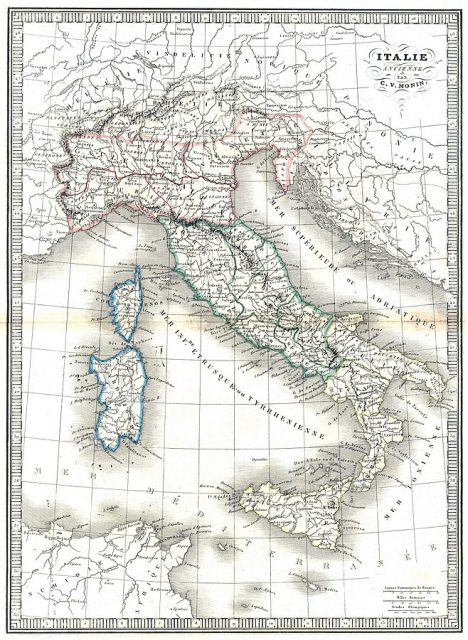
Another instance of Roman dominance through siege work took place during the Judea revolts, which was the Siege of Masada. Collins mentions the size of the siege tower used to assault of Masada, “90-feet tall siege tower was rolled up to the ramp.” He then goes on to mention what it had been equipped with, “with catapults on the tower keeping up a constant rate of fire to clear Masada’s nearest ramparts of Jewish defenders, a battering ram inside the wooden tower began pounding the base of the wall.” The Romans were able to get into Masada and hit another, a second wall which then the Romans had retired for the rest of the day. But that night, “Jewish men at Masada, knowing that sunrise would bring the final Roman assault, made a pact. They went around to around to their wives and children, and killed them.” Collins then goes on writing that the next day the Romans entered the city and passed through the second wall and they engaged dead men, women, and children. Collins uses this piece of history to show even the mere presence of Roman siege weapons cause almost an entire city to perish. Only “an old women emerged, followed by a younger women, a relative of Eleazar with five small children… these women and children had hidden in one of the underground water conduits.”
The Roman engineers learned a lot from the captured Greeks, and as a result, they were able to produce both effective land and naval domination throughout their time. The works such as the siege tower did include much to construct but was much more effective in attacking a fortified location surrounded with walls edit. Although the of ladders were easily transportable and constructed, they were far inferior to siege towers because the latter protected the soldier from arrows, boiling oil, incendiaries, and other missile weapons. The siege towers also kept the fighting men in good physical condition, compared to the state they would be in after climbing tall ladders while avoiding missiles before beginning to fight.
The next invention of the Roman engineers and architects build a unique road system. This road system connected all the territories of Rome, linked from city to city and even beyond that. Most people would question the use of roads during warfare but in the ancient world, the civilizations had little to no modes of transportation other than a persons body. These roads made it much easier for the soldiers to travel and decreased the time in use of traveling on unsupported paths. The Romans depended on their connected road system to move their armies with ease and efficiency. Most people underestimate the importance of the road network but “roads made possible rapid and efficient movement of troops and supplies.” Goldsworthy writes, “road building was also commonly undertaken by the military… providing the military with improved communications for moving men and material as required.” The Romans needed the road systems to travel due to their controlled land in Europe, which has little to no sea transports other than the Mediterranean Sea which Europe shares a border with.
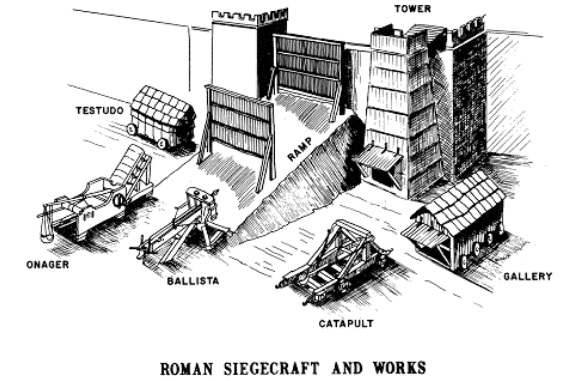
The Romans were able, with some time, to discover many ways to outsmart their enemies and most of the time it was by inventing a new weapon or strategy. The Roman weapons of war shaped the tide of battles and wars throughout Roman history. The soldiers conscripted into the army were young men aiming for greatness and by having these advancements in military science helped achieve each soldiers’ individual success. When the soldiers did well in battle, the commanders of the army or Concils, in the earlier years, also became more famous, gained more money, and became more powerful politically. The effectiveness of the army helped advance the individual in more ways than just becoming a soldier of Rome. Winning battles did not only come to victory by just the sword but their works in engineering as well. The victories were not only given to just the soldiers and engineers of the army but the organization behind it all gave the Romans a huge advantage leading to their powerful military strength.
At early times of the Republic, the Roman military was organized according to the Polybian Legion. In this formation, there were three rows of different unit types. The first line was the hastati, “formed from younger men,” then the second line of units were the principes, “formed from men in their (age) twenties and thirties, considered to be in the prime of their life”, and the last line belonged to the triarii, “recruited from the oldest most experienced soldiers.” Each man in a legion was assigned to a specific unit of soldier. The soldiers in each unit, the hastati, principes, and triarii all had different pay grades— according to their ranks, and there was limited mobility for the poor to achieve membership in the higher ranks. For example, the equities, or cavalry, was composed of the wealthier men because they could afford to pay to bring their on horses and grooms, while the youngest and poorest of the soldiers would make up the velites. “The poorest citizens, who still owned enough to make them eligible for service… acted as light infantry (velites)”. This form of social rank system continued straight into the Marian Age of the Roman military.
Consul Gaius Marius changed the way the Roman military was organized. He is “credited with taking the decisive steps that laid the basis for the professional standing army of the principate.” With this new reform in the army, tacticians were able to reach their full potential and conquer the known world. Gaius Marius had the soldiers train in full equipment, with full gear. When the Legion would march, in full gear, they would not only carry the weapons, but everything they needed on a campaign. “A legionary on the march not only had to bear the weight of his armor, shield, and weapons, which could be as much as 44 pounds, but also had to carry a bulky pack of equipment ranging from entrenching tools to cooking pots and pans. This could add 33 pounds or more to his total load.” The soldiers would spend hours training with their swords, rather than coming in from their fields when they were called to arms and picking up a weapon for the first time. The professionalization of the Roman military meant that it was significantly more effective, but it also made the military a career for some male Roman citizens.
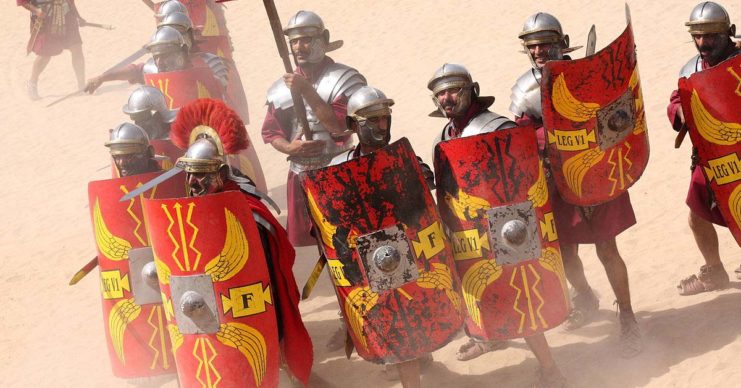
During the Polybian age of the army, soldiers were conscripted into a sixteen-year enlistment that included salaries and spoils from conquering towns or cities. Soldiers who performed well in battle were given appropriate bonuses, including money, decorations, and awards. “Legionaries who distinguished themselves in battle could expect not only monetary rewards… The General would read the legionary’s previous citations aloud, then praise the soldier publicly for his latest act of gallantry, promoting him and often giving him a lump sum of cash as an award or putting him on double pay, before presenting him with decorations of valour. Collins uses Polybius’ records to demonstrate that soldiers’ salaries changed many times between the republic and the empire, notably when, “Julius Caesar doubled the legionary’s basic pay from 450 to 900 sesterces a year, which was what an Augustan recruit could expect.”
The foot soldier was very important in times of war. They became the ones who changed the outcome of a battle and even wars and so the officers made sure each soldier was being trained properly and efficiently. But many times, the legions of Rome defected, especially in times of civil war, and then they would be punished if the defected legions had lost the war. The punishment sometimes for this was called to “decimate”, a practice in which every tenth man would be publicly executed. Of course, the soldiers who were executed were not necessarily those who committed the crime. Other laws were created to keep the soldier in top shape and to maintain a state of constant vigilance, including always carrying arm. For example “General Corbulo had one soldier brought out of a trench he was digging and executed on the spot for failing to wear a sword on duty.” While in another case “one cheeky centurion went naked while digging, except for a dagger on his belt… Corbulo had this man, too, pulled out and put to death.” General Corbulo, and not only him, made sure that his soldiers were able to fight at any second of the day. This strategy was to help aim the soldiers in always being alert, never having your guard down.
The Romans used everything in their arsenal to defeat their enemies and they invented many fantastic weapons of war, ones that lasted over centuries. Between the gladius and other hand weapons, the siege tower and other siege weapons, and the organization of the army made the Romans probably the deadliest fighting force the world has ever seen. The Romans were excellent at their militaristic advancements that every area of their military has and is being studied till this very day and probably will not be forgotten.
Bibliography:
- Chris McNabb : A History of the World in 100 Weapons (New York: Osprey Publishing Ltd) 2012
- Simon James : Rome and the Sword : How Warriors and Weapons Shaped Roman History (London, Thames and Hudson) 2011
- Jane Penrose : Rome and Her Enemies (Great Britain Osprey Publishing) 2008
- Stephan Dando-Collins Legions of Rome : The Definitive History of Every Roman Imperial Legion (United States, St. Martin Press) 2010 Page 356
- Stephan Dando-Collins : Caesar’s Legion : The Epic Saga of Julius Caesar’s Elite Tenth Legion and the Armies of Rome (New Jersey, John Wiley and Sons, INC) 2002
- Adrian Goldsworthy : The Complete Roman Army (London Thames and Hudson) 2003
- R. G. Grant, Warrior : A Visual History of the Fighting War (United States, DK Publishing) 2010
All photos are provided by the author.
